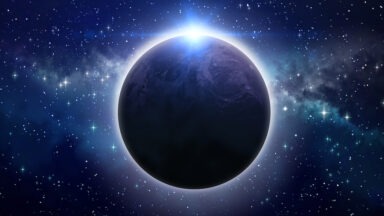Scientists Say They’ve Discovered Martian Life in Form of Fungi

The days of scientists dismissing all signs of life on the Martian surface as pareidolia or just a trick of shadows may be over, as a statistically significant majority of 70 scientists agree they’ve identified evidence of life on the red planet.
According to a paper published in the Journal of Astrobiology, as well as the consortium of believing scientists, the Mars Curiosity Rover seems to have photographed evidence of life on Mars in the form of algae, lichens, and fungi.
In addition to a number of pictures showing these prokaryotes and eukaryotes seeming to thrive on the surface of Martian rocks, other photos depict what appear to be fungi growing on the rover itself.
The evidence supports a number of hypotheses that these types of “puff-balls,” or fungal organisms would be able to survive the Martian atmosphere, despite exposure to intense space radiation and harsh atmospheric conditions.

Though this information is just now being released to the public, other scientists are claiming they identified equaling compelling evidence decades ago detected by the 1976 Viking mission, yet for some reason NASA still didn’t equip subsequent missions with the proper tools to test for life. And despite the substantial photographic evidence of this life, the only way to truly prove whether it’s living is to sample it and send it back to Earth for testing.

“There are no geological or other abiogenic forces on Earth which can produce sedimentary structures, by the hundreds, which have mushroom shapes, stems, stalks, and shed what looks like spores on the surrounding surface,” said the study’s lead author Dr. Regina Dass of the Department of Microbiology at India’s School of Life Sciences. “In fact, fifteen specimens were photographed by NASA growing out of the ground in just three days!”
Dass and team also argued that there are fluctuations in methane levels on the ground as well as in the Martian atmosphere that vary between seasons, much like methane fluctuations seen on Earth. 90 percent of that methane is the direct result of living organisms.
NASA denies the assertion that these photos are proof of living organisms, calling into question the validity of the journal making the claims. Instead the administration says the photos simply depict minerals like hematite.
But if this scientific consortium is correct and there are basic life forms able to survive Mars’ hostile atmosphere, how they ended up on the red planet is a bit of a mystery.
Considering that certain cyanobacteria and fungi have been observed to survive the vacuum of space and cosmic radiation, some believe these microorganisms on Mars may have come from Earth, either blasted from meteorite impacts or having caught a ride with one of the rovers.
And then there’s also the other hypothesis that says they could be remnants of an ancient civilization that once resided on Mars, before some cataclysmic event turned the planet into the inhospitable rock it is today. At least that’s what remote viewers working for the CIA claim they saw.
For more on the potential habitability of Mars watch Dr. Robert Zubrin on this episode of Beyond Belief:
The Longest Lunar Eclipse of the Century is This Week

The longest partial lunar eclipse is this week. What can we learn from the ancients about this celestial transitional event?
In the early morning hours of November 19, the moon will be in partial eclipse. NASA says the moon will slip behind the Earth’s shadow for about two and a half hours, and weather permitting, a huge swatch of the planet will be able to see at least some of the eclipse. The moon, as well as other celestial bodies, have played a big role in the lives of ancient peoples, mystics, and shamans.
Jack Cary, researcher and author of “Paranormal Planet,” said about the history and significance of the eclipse, “In ancient times, eclipses were always seen as an omen, whether it be good or bad. As the sun or the moon becomes shaded over, you’re seeing a connection both of the feminine and the masculine qualities of existence, and because of that it was seen as a holy union.”
What is the connection between the moon and divine feminine energy throughout history?
“The moon itself has always been seen as the goddess of the sky, and because of that all goddesses that were worshipped around the world in ancient civilizations all had this symbolism of the moon itself,” Cary said.
What did the ancient people know about the planets that we should remember now?


































